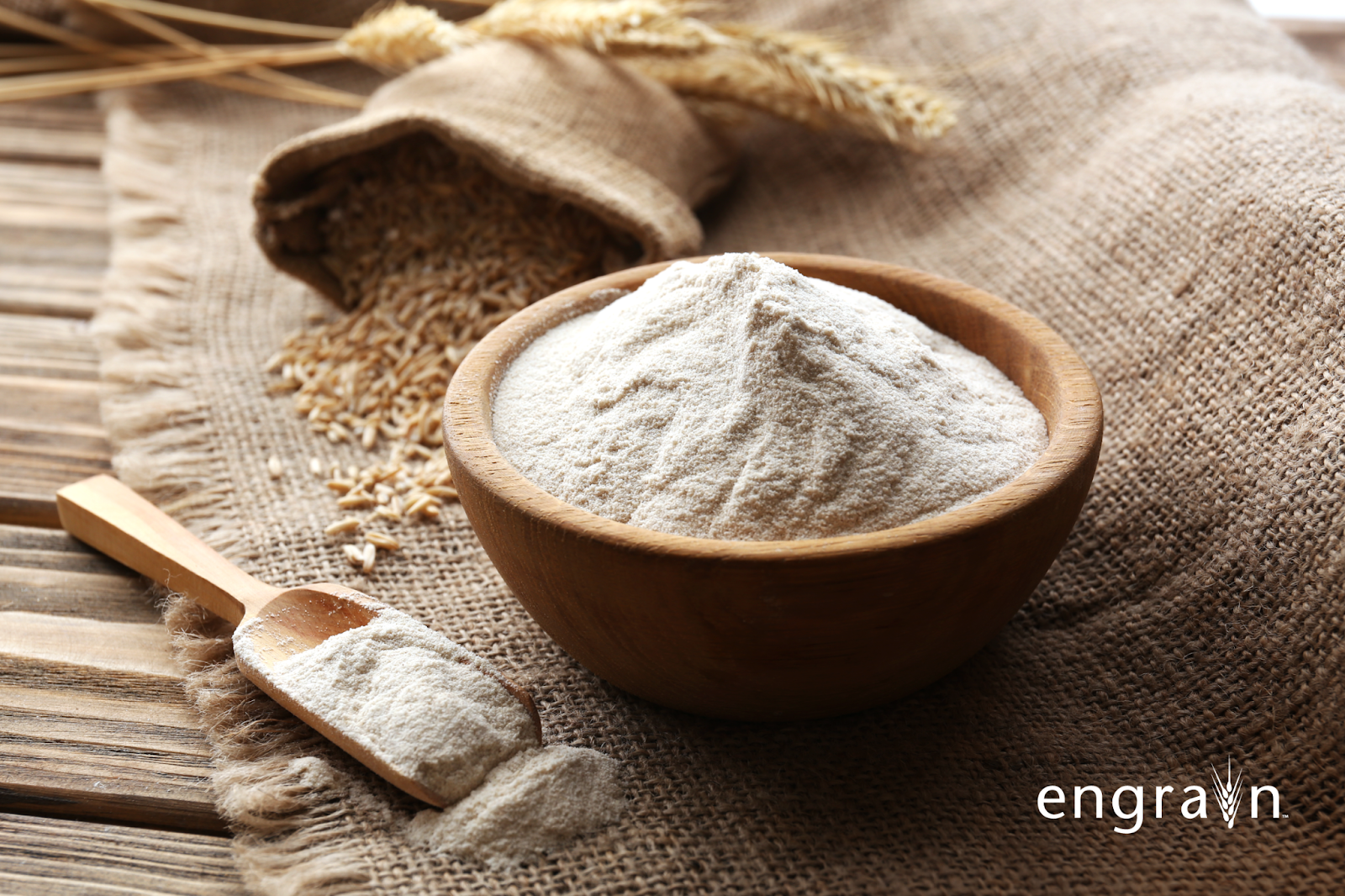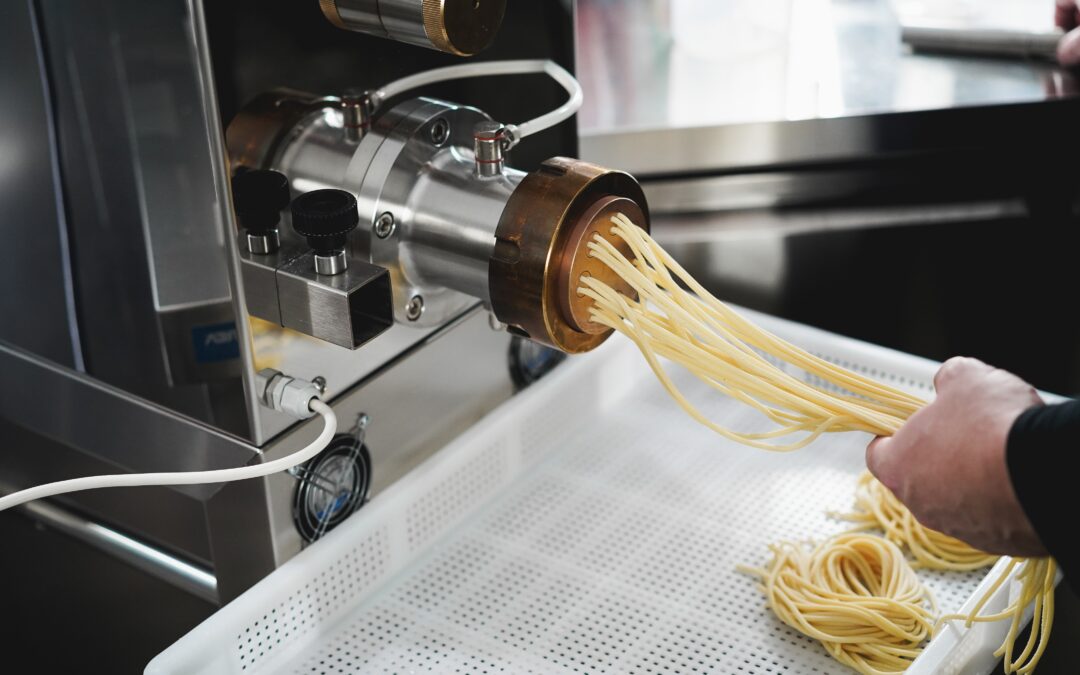Enzymes are becoming increasingly significant in food manufacturing. Millers and commercial bakers rely on enzymes to improve flour and dough performance for specific food products to achieve desired outcomes.
Enzymes extend the shelf-life of bakery products without harmful preservatives, create softer cakes, and provide clean-label alternatives.
Enzymes are also revolutionizing the production of pasta. Whether you’re manufacturing fresh pasta or dried pasta, penne, macaroni, or semolina pasta, food science is constantly exploring new ways to improve food products.
This article will explore how enzymes are revolutionizing raw material use in pasta manufacturing and discuss why this is an important development for the industry. We’ll cover everything from what enzymes are to their role in pasta manufacturing to the benefits of enzymes in the pasta production process. Let’s get started!
Enzymes and their role in pasta manufacturing
Enzymes are biological molecules that act as catalysts to speed up chemical reactions. They are proteins made up of amino acids and have an active site for substrate molecules to bind to, allowing the enzyme to work its magic.
Enzymes can be found in all living things, from bacteria to plants to humans, and are highly specific in the type of reaction they can catalyze.
Enzymes improve dough strength and texture during pasta production by transforming gluten proteins into shorter molecules. This allows the dough to absorb more water, resulting in a better-textured pasta and a smoother surface during extrusion.
Wheat is grown in different classes. Specific classes are commonly used in pasta manufacturing to produce pasta with the desired texture, color, and bite. Common wheat classes for pasta production include hard red winter, durum wheat semolina, and soft white.
Common wheat classes have a range of protein content, gluten strength, and starch composition. These differences in raw materials can be managed by adding enzymes that specifically target the desired characteristics of the end product following extrusion.
Enzyme technology like Engrain’s hydroMAX applied enzyme technology can transform even low-quality wheat into high-quality pasta with excellent firmness, yield, stickiness, tolerance, and color in every batch.

About the pasta manufacturing process
Pasta is a nutritional food that’s enjoyed all around the world, with hundreds of varieties and styles created over the centuries.
Pasta making commonly starts by mixing water and semolina flour. Semolina is a coarse-ground flour from the heart of durum wheat, or endosperm of durum wheat, an amber-colored, high-protein hard wheat.
Semolina flour is easily digested thanks to its lower starch content and higher protein content than all-purpose flour. Farina, rougher granulations of other high-quality hard wheat, is also used to make pasta. Semolina and farina flour are enriched with B vitamins and iron before shipping to pasta plants.
Once combined, producers can add eggs, vegetable juices, and herbs to the mixture for flavor, color, and nutritional value. The mixture is then rolled into sheets, and either extruded through dies or cut into various shapes using rotating blades.
Once cut and shaped, the pasta is dried in a regulated environment for several hours to remove excess moisture and increase shelf life. Moisture content is incredibly important in pasta; careful pasta drying is critical to avoid spoilage and breakage. The drying period can range from three to twelve hours, depending on the type of pasta.
Enzymes in pasta manufacturing: an overview
Enzymes play a critical role in pasta manufacturing, where they are used to improve pasta quality and achieve the desired pasta characteristics. While durum wheat is traditionally used to make pasta, other wheat classes can also be used with the help of enzymes. Here’s an overview of the key points covered on enzymes in pasta manufacturing:
- Enzyme function. Enzymes break complex wheat molecules (such as starches, proteins, and lipids) into smaller, more manageable molecules. This results in improved pasta quality and more desirable characteristics, such as texture, bite, cooking tolerance, and water-holding capacity.
- Enzyme sources. Enzymes can come from bacterial, fungal, and plant sources. Plant-based enzymes (like malted barley flour) and bacterial and fungal enzymes (from growing mushrooms) are commonly used in pasta manufacturing.
- Enzyme application techniques. Enzymes can be applied to dry flour or endosperm chunks during the milling process or directly to the pasta dough during the mixing process. The optimal enzyme application technique depends on several factors, including the specific enzyme, the processing time, and the desired pasta characteristics.
- Enzyme optimization. Pasta manufacturers adjust factors like temperature, pH, and processing time to optimize enzyme activity and achieve the desired pasta characteristics.
- Benefits of enzymes. Enzymes offer several benefits in pasta manufacturing, such as improved pasta quality, cost savings, increased efficiency, and customization.
- Proprietary enzymes. Some companies use proprietary enzymes in their pasta products to improve the pasta-making process and achieve the desired characteristics of cooked pasta.
Benefits of enzymes used in pasta manufacturing
Enzymes offer several benefits when used in pasta manufacturing. Here are some key benefits of using enzymes in pasta production.
- Improved pasta quality. Enzymes help break down complex molecules in wheat flour, resulting in improved pasta quality. Enzymes can improve the pasta’s texture, bite, and mouthfeel, making it more appealing to consumers. Enzymes can also help bind the starch to keep it from leaching into the cooking water, as well as decrease stickiness of the noodle to keep them from sticking together during cooking. The use of enzymes can also help with tolerance to overcooking or help keep the bite when cooked pasta is kept in a holding vat for later use, such as in buffets or street carts.
- Cost savings. Enzymes can help reduce costs in pasta production by enabling the use of less expensive wheat classes. With the right enzymes, pasta manufacturers can achieve the same quality as durum wheat pasta (which is more expensive and in limited supply).
- Increased efficiency. Enzymes can also increase efficiency in pasta production by reducing processing time and improving pasta yields. This results in a more streamlined production process and greater output.
- Customization. Different enzymes have different specificities, allowing pasta manufacturers to customize the pasta-making process to achieve specific characteristics (e.g., cooking tolerance, water-holding capacity, and texture).
Enzyme application techniques in pasta manufacturing
Enzyme application techniques are critical in pasta manufacturing. The type of flour and moisture addition determines the optimal enzyme activity and, ultimately, the desired pasta characteristics. Enzymes can be applied to dry flour during the milling process or directly to the pasta dough during the mixing process.
Applying enzymes during the milling process involves adding enzymes to the dry flour or endosperm chunks before the customer receives the flour to make pasta. This technique allows for even enzyme distribution in the flour, resulting in consistent enzyme activity throughout the dough.
However, the optimal application technique depends on several factors, including the specific enzyme, the processing time, and the desired pasta characteristics.
Alternatively, enzymes can be added directly to the pasta dough during the mixing process. This technique involves adding enzymes to the pasta dough along with water, flour, and other ingredients.
While this technique allows for more precise control over enzyme activity, it can also lead to uneven distribution of the enzymes in the dough. This can result in inconsistent enzyme activity throughout the pasta. The best application of enzymes would be into the flour at the mill or in the mixer mixed dry before adding other ingredients and water. This will allow for even distribution of the enzymes in the flour.
Factors affecting enzyme performance
Enzymes play a critical role in pasta manufacturing, but their use is not always necessary when using Durum wheat (which is high in protein and gluten). Durum wheat is traditionally used in pasta making due to its superior texture and cooking qualities. Enzymes are added to improve pasta quality and achieve the desired pasta characteristics when using wheat other than Durum.
Several factors can affect enzyme performance during pasta manufacturing. One such factor is the composition of the wheat, which can vary depending on growing conditions and can impact enzyme activity.
Temperature in the screw can affect enzyme activity. If the screw temperature is too high, the enzymes are at risk of being inactivated. The temperature of the die head during the extrusion process can affect enzyme activity, as well. If the temperature is too high, the risk of enzyme inactivation becomes higher.
The extrusion process can also influence enzyme performance — particularly the laminator, which presses the dough into thin sheets before cutting. The laminator can impact the gluten structure and distribution of enzymes in the dough, while the extrusion environment’s temperature and humidity can affect enzyme activity and effectiveness in breaking down complex carbohydrates and proteins.
Therefore, pasta manufacturers must carefully consider these factors when selecting and applying enzymes to ensure optimal enzyme activity and achieve the desired pasta characteristics.
Enzyme safety and regulatory compliance
Enzyme safety and regulatory compliance are essential in food production, including pasta manufacturing. Enzymes used in the food industry must comply with strict regulations and guidelines set by various regulatory bodies, such as the U.S. Food and Drug Administration (FDA) and the European Food Safety Authority (EFSA). These guidelines ensure that enzymes used in food production are safe for human consumption.
Consumer perception of enzymes in pasta manufacturing is generally positive, as they are considered safe and natural ingredients. Enzymes are widely used in food production, and many consumers are familiar with their use in bread-making, cheese-making, and other food products.
Future outlook of enzymes in pasta manufacturing
Enzyme technology has been advancing in recent years, offering new opportunities for the pasta manufacturing industry. One advancement is the development of specific enzymes to target distinct flour components, leading to increased efficiency and reduced processing times.
Enzyme technology works under diverse processing conditions. It also offers specificity, allowing for targeted processing and increased efficiency. Enzyme technology is also generally considered environmentally friendly.

Manufacture high-quality pasta with help from Engrain
Enzymes help produce high-quality pasta, improving its texture and appearance while increasing cooking yield as well as decreasing starch loss. With advancements in enzyme engineering, the possibilities for improving food production are endless.
Pasta manufacturers face challenges like inconsistent wheat quality and rising costs, decreased protein content and quality along with decreased crop yield. Enzyme technology offers a solution to these obstacles.
Pasta manufacturers wanting to enhance production and reduce costs can try Engrain’s hydroMAX technology. Engrain’s hydroMAX technology allows pasta producers to use lower-cost bread flour while still achieving comparable quality. By partnering with Engrain, pasta manufacturers can access the benefits of enzyme technology and improve their bottom line.
